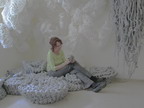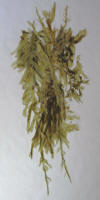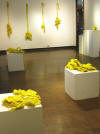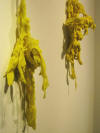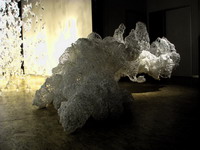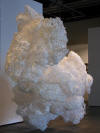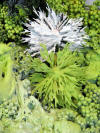For my installations the interrelation of organism in ecosystems serves me as a starting point for researching science and experimenting with natural resources. I also love the transformation of recycled man-made materials into natural shapes that resist artificiality. The final artwork is drawn in a space between natural and artificial, bridging the synthetic and the organic. In particular, I observe the process of change that my projects undergo: ordinary at first and specimen-like when given a second look. In many cases it is the process of transformation, i.e., unearthing the mysterious beneath the plain, which keeps me searching deeper for new results. For example, my artwork reflects natural processes like melting and crystallization of inorganic matters as well as growth, decay and fossilization of organisms.
